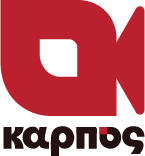A reflexion about media tutors in online seminars
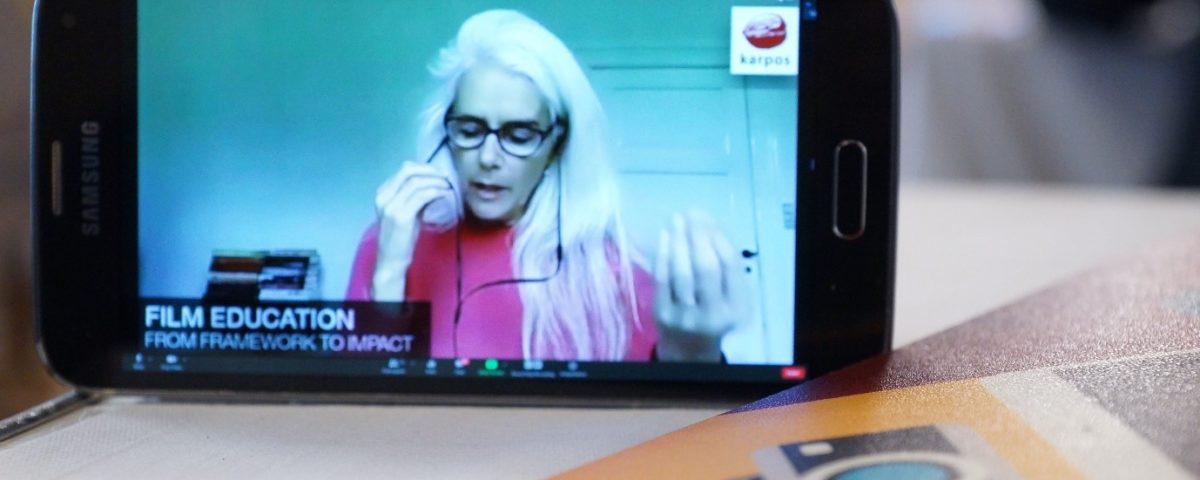
by Maria Leonida, Film Director & Head of Programs Karpos
Now that many of us have been exposed to online sessions as speakers or invited guests, it becomes crucial to form ways of interacting with the audience. Especially if we aim at a rich and reflective experience within the subject of Film and Media Literacy.
As a media trainer, I find the transferability of our hands-on training and live courses challenging in this new set up. Here, I will present some thoughts from my experience as a media tutor during the last couple of months. Apart from being invited as a discussant / co-presenter in a few online film education discussions, I coordinated a 2-day, hybrid, bilingual, Film Education conference titled “Film Education: From Framework to Impact”, on the 10 and 11th of October 2020, in Athens. In addition, I delivered a 2-hour teacher training webinar for the EU project Speak UP-Media For Inclusion for which I tested and applied some interactive elements. My philosophy has always been to offer experiences in parallel to theory. The “try out” approach is strongly connected to understanding the essence and appreciation of the possibilities of audiovisual language.
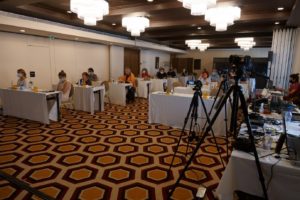
Live audience and technicians at the Film Education Seminar
Adjusting our media for a new media landscape
In our recently imposed, distanced (dislocated?) professional life, most of us have become conscious of having to test light, sound and screen-sharing options. Some of us are even aware of the importance of the background and body postures in front of the wide-angle lens of a webcam or a laptop. I find that these seemingly technical issues are part of a wider media awareness, which are useful to know as they form a layer of care and respect with regard to our listeners and viewers. However, the important part comes when we, especially as audiovisual literacy experts, have to think about length and content of presentations, question and answer sessions, pauses and silences, creating space and time for our audience to think and reply, as well as attending to ways of engaging real-time discussion and the exchange of materials.
For the Film Education Conference, we curated a series of six, 40 minute independent “watch and tell” workshops from a variety of international tutors. Alternatively, for the Webinar I chose to present two different units: 1. a hands on, creative group activity on developing a critical point of view and 2. a documentary analysis discussion.
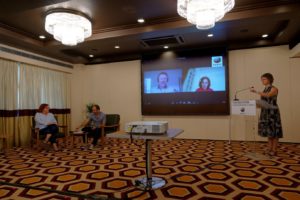
Panel discussion with distant and live speakers (think of the space setting)
In the Conference, all presenters were experienced and prepared for the online situation. We discussed the manner in which each was planning to run the session. My aim was to encourage firm structure and variety, avoid repetitions and allow for some interactivity which would need to be shared among the live audience and the online registered participants. The main question was how to develop intuitive, open discussion in a pleasant and meaningful online experience. I gradually realized that the panelists needed to organise some questions for the audience beforehand and categorise them from the simpler to more complex ones, in order to be able to respond appropriately. I also reflected on which questions would engage participants in longer answers in the chat space, which others might provoke either similar or contradictory answers. We spotted the need for the online audience to receive good quality feedback from the presenter, in other words, if one makes an effort, while sitting alone, to reflect and write on the chat, then some sort of feedback is expected.
Although the materials were in general very interesting: from Lady Gaga videoclips to S. Paradjanov and Oliver Twist movie extracts, storyboards or short tutorials, we found that during the final presentations some of the intended interactions slipped through the cracks. One of the reasons, I believe, was that some tutors addressed the audience with less directness and less frequency, possibly due to the tension of the moment. As the act of presentation is highly personal, it was felt that this the dynamic of the hybrid situation could not be taken up during breaks with the online tutors. Third, as much as scrolling down a page may look interesting on a big projector, it becomes less interesting when, as a listener, you do not control it yourself and you are looking at it on a small screen (so we need to think of rhythm, devices, sizes and screens a bit more).
Another reason is common to our known practices: it would have helped not only to organise a one to one session with the independent tutors but also to have a common rehearsal with all of them. Finally, as we had thought, the interaction was the hardest one to deal with, as we had to decide which audience members to give priority to, (the onsite or the online and to what extent?)

Positioning the presenter and the cameras at the right angle
The second major issue was the coordination of all parties concerned, technicians and materials. It was confirmed that the presence of a moderator is a very welcome new role, not only as a typical moderator in a round table, taking notes and recapping questions. The moderator needs also to keep an eye on the chat and be even more informed on the content of the presentations. This key person needs to respond both to the presenter and keep an eye on the audience, so that he/ she can jump in, to keep the flow, in case of a technical failure. For that reason, we had split this role between myself and our coordinator who was well aware of all the presentation materials. She was in charge of the technical communication with all the parties involved and would take written questions from the chat, while maintaining communication with the presenters, and the live audience by having eye contact with the camera for the live streaming. We had to be both critical discussants and aware of communication issues. I was more concerned about the presentation and final outcome, while she was building effective support backstage.
As mentioned before the key thing to manage in such an event is the preparedness of the speakers: for some it could be the first time they have engaged with this type of technology: Rehearse! Rehearse! Rehearse! And for the remote participants: it is important to give them clear and simple instructions, before and during the event. You will have to repeat the instructions since people either log in and out and also not everybody is fluent with the technologies used. Finally, if it is a longer event with multiple guest speakers, as with this case study, in the online world it is paramount to:
- choose choose your guests and speakers carefully
- give them specific and strict time limits
- suggest specific topics that keep the audience interested and engaged.
- acquire a variety of appropriate speakers talking about a range of themes
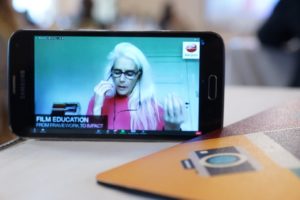
Flexibility of devices
Webinar for Media Literacy and Video Making (within the project Speak-Up, Media For inclusion)
The 2-hour course was divided into two separate sections and addressed teachers and educators. 40 people registered and it was attended by 27. The aim was 1. to study documentary short film making through a short dealing with diversity and refugee identity and 2. introduce a media literacy creative activity.
While planning the Webinar I tried to apply all that I have learnt so far, to build a learning experience where our participants would view more than just a sympathetic but essentially static medium shot of my head and shoulders or a simple Power point presentation. We insisted on involving the audience in a participatory process which would be direct, “sharable” and that would incite debate.
We asked the participants to see the short film ( ‘’Portrait Day’’ , 12’, directed by Maria Leonida) prior to the session and offered again the chance for a screening during the break.
The challenge was how to:
- Give a flavor of film analysis in a participatory and relatively quick way
- Plan a group activity that could function as a personal “home” exercise done in isolation
- Investigate how the variety of available platforms could serve this purpose
- Ensure that the creative, the critical and analytic dimensions of the workshop would be supported and developed
For the film analysis part, we tested the Poll function of ZOOM (one could also use external survey platforms instead of this one but we took the advantage of staying inside the same environment and eliciting quick response from the system). The Poll function proved to be particularly demanding as I had to turn the quality of an open-ended discussion or short text answers to “closed” multiple questions. This meant that although part of the “reading” of the short film that was screened was translated into a series of predefined possible answers, the nature of these answers were varied, reflective and contradictory enough to allow for free thinking. Questions were based on a clip, or a shot, or a filmic value (e.g. time) and we collected more reactions in the chat space. This approach encouraged equal participation from all while avoiding a long series of oral interventions.
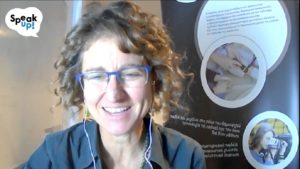
Encouraging the audience to participate
Creative activity: emphasising the personal
We introduced an exercise drawing on visual semiotics focusing on relations between the “producer” and the “reader”, where the group was assigned to take certain photos following specific guidelines. Since the participants were not classmates and would only meet for those 2-hour session, we had to sacrifice the collaborative element of the original activity and intensify the personal aspect. Each participant at home, fulfilled the task and uploaded their work onto one of the suggested platforms, Padlet and Google Photos. In this way, everybody could view and reflect on each others’ work in timely and immediate ways. We intentionally tried two different image sharing platforms with short text addition features to see which characteristics of each platform better addressed the aims of the exercise in an online environment. Also, I aimed to show that there is no single, best solution in the App/platform world so we can critically think and choose depending on their possibilities and our goals. Usually, free platforms are designed by web developers and designers with a variety of purposes in mind, which do not necessarily fulfil our needs. But my experience is that several commercial, lifestyle apps (such as Pic collage, Speaking Photo etc.) can be very interesting for Media Education once you orientate their use towards your own purposes.
The main difficulty from some participants was familiarity with the two platforms as we can see in their evaluation comments below.
“I will have to synchronize my devices…so I can transfer files easier from my mobile phone to my computer…”
“It is easier than I imagined. I would say it is a fun process.”
However, considering that all this happened in 60 minutes, I consider it a success. The experience introduced them to the possible creative uses of such software applications and to ways of negotiating and reflecting on the issues at stake.
“There was no difficulty! In fact, it is more creative this way and nice because everyone has different objects and lighting in their house…so the other participants don’t know what they will see”
Participants according to their feedback at the end of the webinar also said that they felt comfortable doing these exercises with their groups. What was particularly encouraging was that they thought they might use these tools and practices with multicultural groups and with different age groups.
Notably one participant said:
“I am interested in the use of technology in general, and I always think how to use it creatively with young people, and the analysis of documentary production was very interesting as an output itself and mostly how to work with people who don’t speak the same language.”

Use of Google Photos as a discussion platform
Key observations on temporal, spatial and social cues
Asynchronous online teaching has many advantages in terms of its structure: presentation units, assigning tasks, sending links for study and preparation/delivery of “homework”, while synchronous live sessions mean the careful negotiation of time, technology, resources, speakers and social interaction.
The Chat featurefers unique opportunities, among which the ability to:
- a) see and relate to peers’ ideas directly
- b) read them carefully and reflect on them – often before the coordinator or speaker has time to do so
- c) experiment with the development of thought
- d) develop more collaborative discussion
This virtual exchange is a new space for discussion and a textual layer that compensates for the lack of group work. It also generates a sense of warm coexistence in the same room.
Ordinarily we would share the same space in a class or hall, which to an extent enables the creation of empathy. Of course usually there is rarely equal participation in a big group and often only 4-5 participants would express an opinion or react to a question. But the eye contact, body language and physical presence allow for a sense of sharing and participation even through silence. Now, we are never sure WHAT our audience sees, how well they see or hear and if they feel relaxed enough to mention a problem or prefer to stay silent; perhaps they might even go for a coffee or snack in the kitchen. The lack of eye contact can be devastating for a speaker as one has little or delayed evidence of boredom, nervousness, attentiveness or curiosity. The reciprocal need of eye contact and an “animated” voice becomes even more crucial for our participants too.
Having to concentrate on a screen only makes the experience more solitary and more acute for both the speaker and the listener. The audience tends to have less patience, as the space that is loaded with information and triggers is confined in a screen not larger than 15-19 inches usually. This equals half or even a quarter of a normal house window. So in a non virtual world we would consider that a “restricted” view. On the other hand, the amount of information coming out of that rectangular flat space is quite rich and multimodal. So the experience becomes more demanding as time runs in a very linear way, but sound, images, text, moving elements, graphs etc, are usually transmitted in low or medium quality. In addition, we are often alone, surrounded by spatial features and distractions not connected to the source of information and “storytelling” of the seminar.
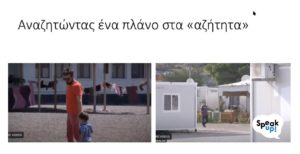
Discussing the feeling of time through the use of two screenshots
In other words, as speakers and trainers, we do not have the luxury of natural reactions which accompany body movement and on site technical preparation. Understandable and ‘forgivable’ interruptions to do with fiddling around with adaptors or cables, looking for a page online or certain materials, currently all need to be absorbed in a perfect presentation, much more than before. We now need to be more careful about jumping from one source to the other without asking our audience if they can see it. There is nothing more boring than hearing someone asking you “Can you hear me?”
Conclusion – the production of a polished performance
We are now more akin to actors rehearsing in front of a mirror, managing our performance, facing the stage lights blinding our view and connection with the audience. We just have to have a ‘blind’ belief in our listeners and our participants and faith in our work. For those who have taken the time to attend, we owe them our best preparation and a smooth, fluid “performance”: like smooth editing on a timeline, the narrative must flow seamlessly for maximum impact.
* A special thanks to Daiana Kefalogianni for the original idea of this blogpost and to Michelle Cannon for her useful comments on the text.
Notes:
The 2-day hybrid event took place in Athens and online the 9 & 10 October 2020. It was part of the European project ‘’Film Education: From Framework to impact’’. The project aims at enhancing and exchanging best cinema literacy practices among experienced institutions (British Film Institute, Danish Film Institute, Vision Kino, La Cinematheque Française) and countries of central, east and south Europe. You can see more here.
The webinar for teachers and educators “Media Literacy and Video Making’’ took place within the European project Speak-Up: Media for Inclusion, Erasmus+.
This new European project, which Karpos is part of, addresses the needs for a smooth integration of young refugees/migrants to their host countries through the use of audiovisual production and media literacy. The project is implemented by 6 organizations across 5 different European countries: ERIM and Réseau Raje, both French organizations, will be leading the project working together with FORMA.Azione (Italy), NextStep! (Hungary), Common Frames (Netherlands) and Karpos (Greece).
See more here. You can follow the project’s Instagram account here.
